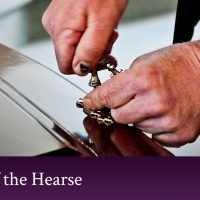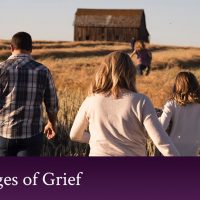When a loved one passes, we do our best to honor his or her final wishes. We want the funeral service to be perfect, the flowers to scent the air like it’s spring, and the weather to be pleasant and comforting. In addition, we want the place where our loved one’s remains will rest for eternity to be as perfect as possible. Choosing a final resting place — be it a cemetery, a burial container, or a mountaintop — can be challenging.
Dolan Funeral Home, a full-service funeral home near Lowell, MA, offers tips for those struggling to choose a final resting place for their deceased loved one.
TIPS FOR CHOOSING A FINAL RESTING PLACE FOR YOUR LOVED ONE
Did your loved one express a desire to be buried somewhere? If so, then you’ll want to honor those wishes, even if cumbersome or out of the way. For instance, in the case of someone being married twice, he or she may wish to be cremated and the ashes spread between both locations next to the beloved spouses.
However, if your loved one did not talk about where he or she wished to spend eternity and/or expressly left it up to you, then here are some points to consider:
- Did your loved one have a favorite spot? Did he or she love the beach or climb mountains or love a secluded woods right down the road?
- We all know when a loved one dies, he or she lives on in your heart. However, if you’re getting your loved one cremated, you don’t have to bury the ashes all in one spot. you can keep a portion of the ashes for a special locket, so your loved one will always be close to your heart.
If considering a traditional burial, consider which cemetery would best fit with your loved one. Was he or she religious? Then perhaps a cemetery particular to that religion would be suitable. Did he or she like a particular cemetery over another in your town? Is one cemetery more shaded than another? When choosing a cemetery for a final resting place, you’ll want to find out the burial rules as well. Some restrict what kind of monument you can erect and what type of flowers you can leave or decorations you may have. If this is important to you, make sure you ask before you choose the final resting place. - Consider an urn if you are considering cremation for your loved one. Your loved one can occupy a cherished spot in your home, and with so many options in urn designs, many will not even know the urn on your mantle holds your loved one’s remains. Another reason you may want to consider an urn is if you believe you may be moving from your present location, and you want your loved one to go with you until you’re settled.
- Is there a family history to consider? Are all of your relatives from years past buried in the same location? If not, would you want to start a family burial plot, so you can be buried next to your loved one as well?
- Consider a living memorial. Was your loved one environmentally-conscious? Would your loved one want to be buried under a tree?
- Experts believe having a place of remembrance to physically go to can help bring closure and move through their grief. Choose a place you will want to visit — a place of beauty and quiet solitude, and a place where you’ll feel connected to that person. Final resting places for your loved one are endless. From traditional burial plots in a cemetery and urns to garden stones and one-of-a-kind jewelry pieces or scattering of the ashes, the choice can be overwhelming, especially in the grief process.
Dolan Funeral Home is here to help with all your funeral home needs. We offer a traditional service or a celebration of life. We will cater these memorial events for you as well, and we have a list of recommended caterers for your convenience. We have a wide selection of caskets, urns, and burial vaults. We offer cremation services as well as embalming. We can transport your loved one’s casket to your chosen final resting place. Finally, we offer aftercare support to help you navigate the sometimes complicated legalities a death brings.
Dolan Funeral Home is a family-run funeral home that has been serving the greater Boston communities since 1974. Our experience and compassion makes us the best funeral home. Contact us today for all of your burial service needs!



